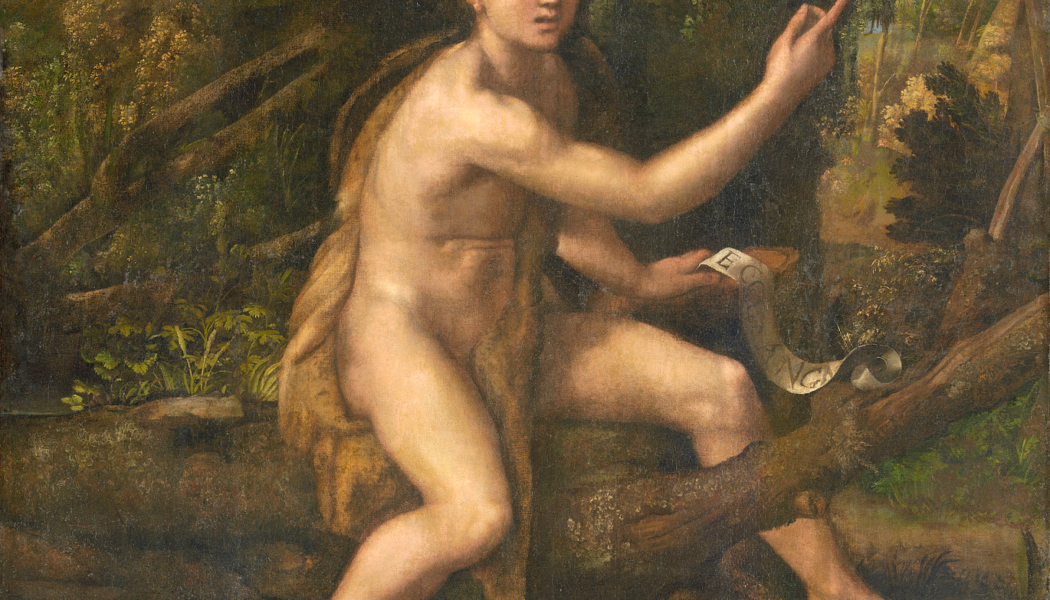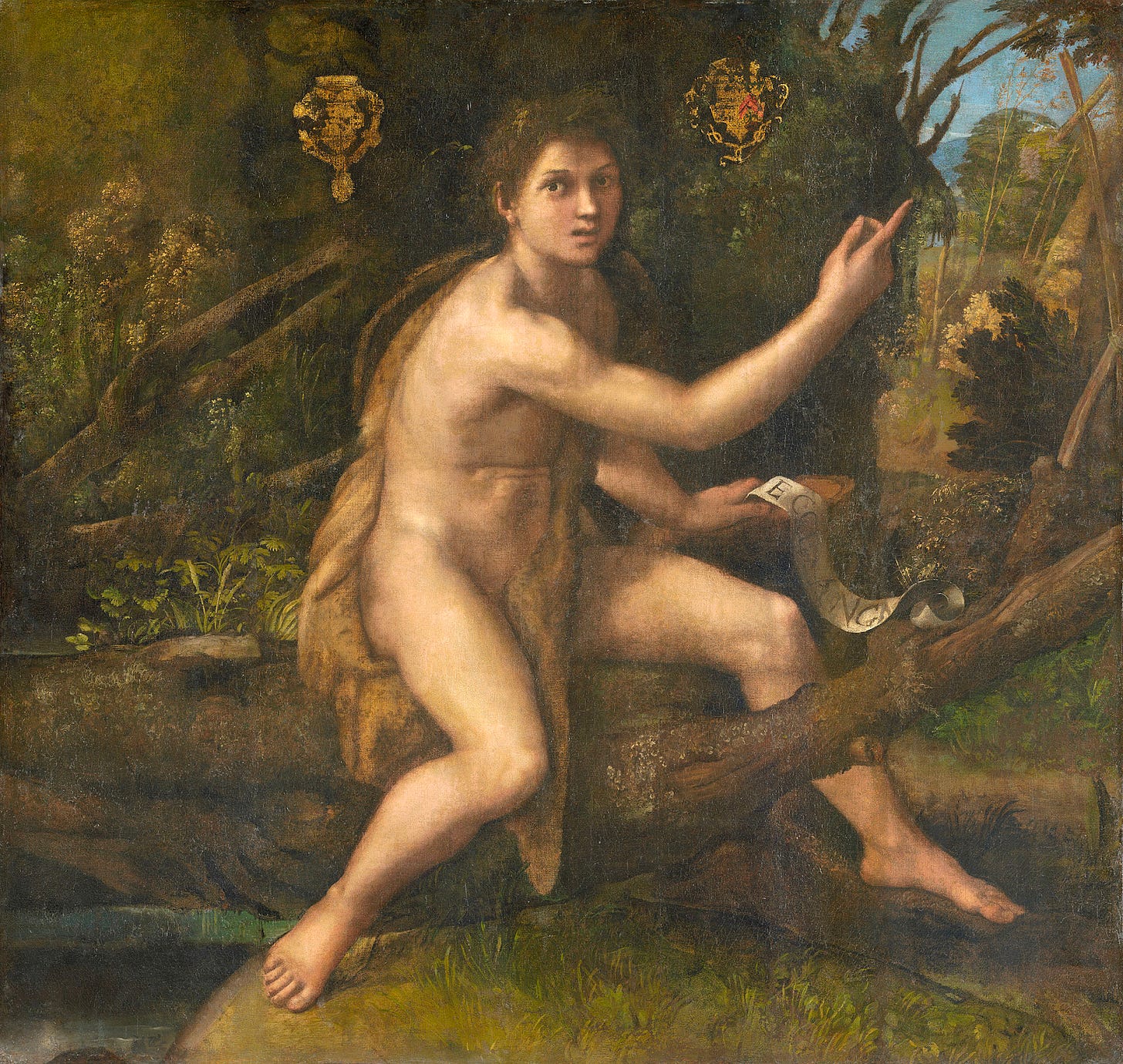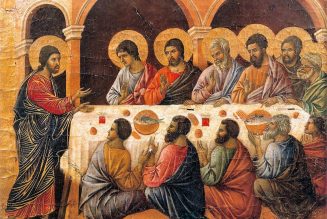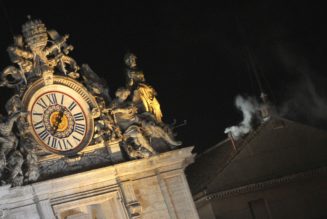The Church this week celebrates the Solemnity of the Nativity of St. John the Baptist — the feast, effectively, of John the Baptist’s birthday.
Like John the Baptist himself, there is a lot unusual about this feast.
For example, in most places in the U.S. the solemnity will be celebrated on Thursday, June 23. But if your church is named for John the Baptist, or he’s the patron of your diocese, you might be celebrating the feast on Friday, June 24.
And the Church celebrates nativity feasts only for three people – Jesus Christ, the Blessed Virgin Mary, and St. John the Baptist.
So why does John the Baptist get an ecclesiastical birthday feast in the first place?
The Pillar aimed to find out:
Who was John the Baptist?
Mentioned in all four Gospels, John was a relative of Jesus Christ, according to the Gospel of Luke, born to St. Elizabeth, a cousin of the Blessed Virgin Mary.
John was born to St. Elizabeth and her husband Zechariah, a temple priest descended from the line of Aaron, who was the brother of Moses and the first high priest of Israel.
John’s birth was an answer to prayer for Elizabeth and Zechariah — he was their only son, born when they were “advanced in years” and after they had experienced years of infertility.
The Gospel of Luke recounts that the archangel Gabriel appeared to Zechariah while he was ministering in the temple, telling him that a son would be born and should be named John.
The angel said of John that:
“many will rejoice at his birth, for he will be great before the Lord…and he will be filled with the Holy Spirit, even from his mother’s womb. And he will turn many of the children of Israel to the Lord their God, and he will go before him in the spirit and power of Elijah, to turn the hearts of the fathers to the children, and the disobedient to the wisdom of the just, to make ready for the Lord a people prepared.”
Luke also recounts that when a pregnant Mary visited a pregnant Elizabeth, young baby John – still in utero – “leaped in her womb.”
John became a prophet, living in the desert outside Jerusalem, preaching repentance from sin, and that a Messiah was coming.
Eventually, he baptized Jesus Christ in the Jordan River, and was later beheaded, after he reproached Herod Antipas, the Galilean ruler, for divorcing his wife and marrying his sister-in-law.
Is the Nativity of John the Baptist the saint’s only liturgical feast?
Nope.
His birth is celebrated in June, and his beheading is commemorated in August. And John plays a big role in the stories of the Visitation and the Baptism of the Lord, which are observed liturgically in May and January, respectively.
The Nativity of John the Baptist is usually celebrated on June 24.
But in 2022, it will mostly be observed on Thursday, June 23, while the Solemnity of the Sacred Heart is celebrated June 24. But not everywhere.
Fr. Andrew Menke, director of the liturgy office at the U.S. bishops’ conference, told The Pillar that:
“The Nativity of John the Baptist is a ‘fixed Solemnity,’ assigned to June 24. But the liturgical celebration of the Sacred Heart of Jesus is a ‘movable Solemnity,’ since its date changes each year.
The date assigned for Sacred Heart is a bit strange: the Friday after the Second Sunday after Pentecost. Of course, the date of Pentecost is determined by the date of Easter, which changes each year depending on the spring equinox and the cycles of the moon.
When a movable Solemnity coincides with a celebration of lesser rank, the Solemnity trumps the other celebration. It’s very rare for two Solemnities to coincide, however, which is what happens this year with Sacred Heart and the Nativity of John the Baptist. It’s so rare, in fact, that there aren’t clear rules to govern what should be done, and typically a conference of bishops would need to decide what to do in its territory.
But in this case the Holy See issued instructions that John the Baptist’s celebration should be transferred to June 23 this year – except in places where he is the patron, in which case it’s the Sacred Heart that is to be transferred to June 23.
It’s a little confusing, but fortunately this rarely happens.”
So was John the Baptist actually born in June?
Maybe.
The Church celebrates his birth in June because of some complicated computations, undertaken by early Christian mathematicians who aimed to figure out when Jesus was born.
They started with the premise that Jesus died on the anniversary of his conception, and worked from there.
Dr. Lynne Boughton, a specialist in the history of liturgy at the Liturgical Institute at Mundelein Seminary, explained:
“Within about 200 years after Jesus and John the Baptizer were born, their birth days were calculated by several Catholic mathematicians in Northwest Africa who worked independently of each other.
In writings such as ‘De pascha computus’ – published in the year 243 – individual mathematicians seeking to determine each year’s variable date for Easter also sought to find when the historical Easter – the day of Jesus’ Resurrection – took place.
Drawing on Hebrew scriptures, the Gospels, imperial records, and astronomical tables, they recognized that the Sunday of the Resurrection followed a Friday that coincided with the date of Passover on the Hebrew calendar (14 Nisan). They calculated that of the years in which the conditions reported in the gospels for Jesus’ crucifixion took place, the Julian date corresponding to a Friday occurrence of 14 Nisan was March 25.
This identification of Good Friday with March 25 was the basis for calculating the births of Jesus and the Baptizer. Hypothesizing that Jesus died on the anniversary of his conception, early Christian mathematicians reasoned that March 25 was the date of his Incarnation (i.e., the Annunciation) some 30 or so years before his death. Jesus’ Incarnation on March 25 meant that his birth took place on December 25.
As for the Baptizer, Luke’s Gospel reports that Mary was told at the Annunciation that her kinswoman Elizabeth had conceived six months ago. Six months before March 25 places the conception of … John the Baptizer during the Jewish holy days of autumn, after Zechariah, who would sire John, had offered incense in the Jerusalem Temple.”
Summing up their calculations, Boughton explained, the early Christian mathematicians concluded that John the Baptist “would be born on June 24, six months before the birth of Jesus.”
Fr. Menke pointed out that the feast of John the Baptist corresponds to the Earth’s rotation in a striking way:
“The timing has long been associated with the summer solstice in the Northern Hemisphere, just as the timing of Christmas is associated with the winter solstice. John said of Jesus: ‘He must increase; I must decrease,’ so it’s appropriate to celebrate his birth as the days begin to get shorter, while we celebrate the birth of Jesus as the days begin to get longer.”
Ok, but why do we celebrate John the Baptist’s birthday as a feast? This is pretty uncommon, right?
“The big three” – Jesus, Mary, and John the Baptist – “have been the only holy figures to have [liturgical] commemorations of their nativities,” historian Meghan Lescault told The Pillar.
The commemoration derives from an idea noted by St. Augustine, who said it was generally held in the early Church that because of the Visitation, John was freed from original sin before he was born.
As to a liturgical feast, Lescault explained, the longstanding idea is “that John merits this because he was sanctified in his mother’s womb, leaping in Elizabeth’s womb when visited by Mary pregnant with Jesus, and was thus given freedom from original sin” at the moment of the Visitation.
“So if we look at whose births receive feast days, we have the three people said to be born without original sin,” Lescault added.
“Makes sense! Kind of a big deal. And it makes sense why Jesus and Mary’s conceptions are celebrated, but not John’s, since the moment he was freed from original sin was not his conception, but the Visitation, which is liturgically celebrated. And it should be noted that the ‘deaths’ – in one case, the Assumption or Dormition – of the three are also [liturgically] celebrated,” the historian said.
For her part, Boughton told The Pillar that the feast of John the Baptist’s nativity was formally included in Roman liturgical calendars as early as the sixth century.
And interestingly, John the Baptist’s birth was celebrated for hundreds of years before the Blessed Virgin Mary’s was.
“Mary’s birth was not celebrated until the eighth century,” Boughton explained.
“This is because the age of Mary at the time of Jesus’ conception, unlike the age of the Baptizer, does not cast light on the timing of the savior’s temporal life nor is it indicated in the sacred scriptures. Also, there was the problem of a false gospel written 100 years after the genuine gospels – Proto-evangelium of James – spinning tales of Mary’s infancy that were inconsistent with the world in which the historical Mary lived and were associated with heretical devotions.”
“Only after some parts of the Church in the seventh century began to celebrate Mary’s sinlessness by placing a celebration of her conception on December 8 did calendars of the next century begin to place her birth on September 8,” she added.
With full knowledge of its history, The Pillar hopes you’ll celebrate the Solemnity of the Nativity of John the Baptist with gusto and real joy.
We suggest wild honey, if you can get it.
But – pro tip – skip the locusts. It’s not the right season for them.
Join Our Telegram Group : Salvation & Prosperity










